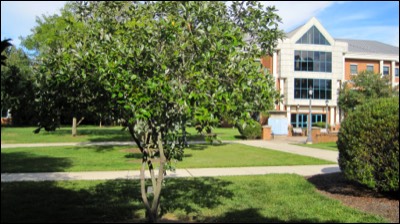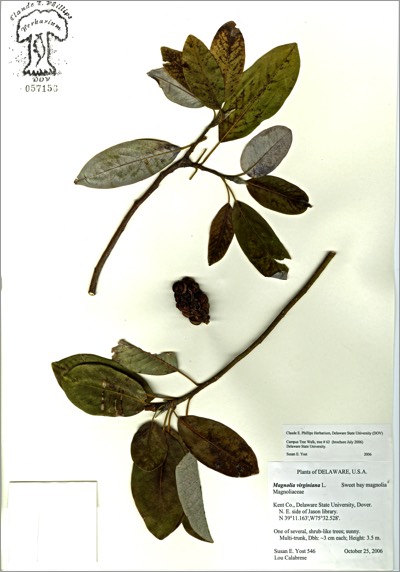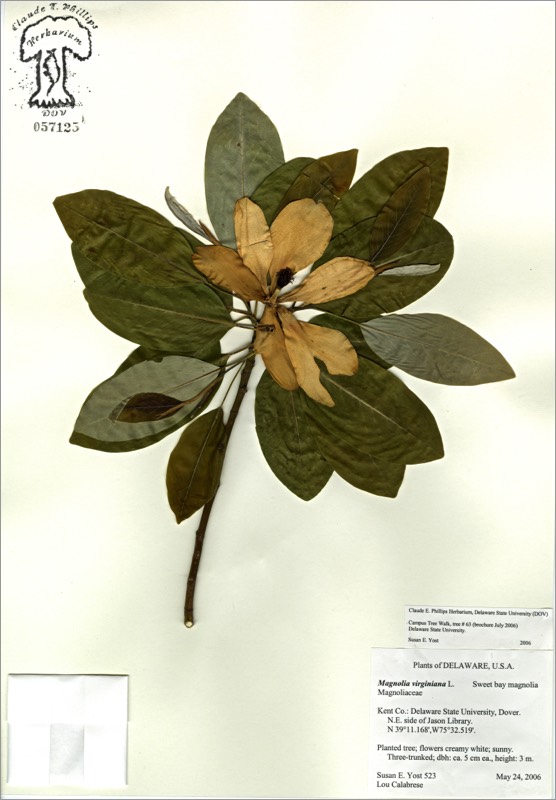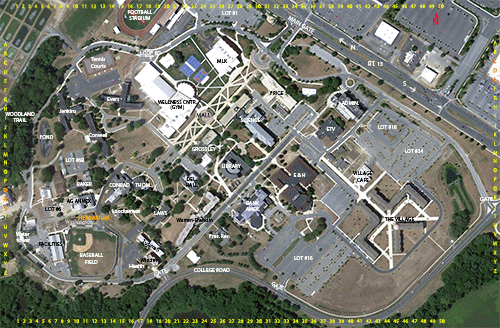Magnolia virginiana


Magnolia virginiana
SWEET BAY MAGNOLIA
Magnoliaceae
E. North America
Location: map coordinates L-26 (northwest of Jason Library), N 39°11'10'' W 75°32'31''
Planting history: presently unknown.
Description:
Native species, State Rank S5 (very common in Delaware), on Delaware coastal plain
SWEET BAY MAGNOLIA
Magnoliaceae
E. North America
Location: map coordinates L-26 (northwest of Jason Library), N 39°11'10'' W 75°32'31''
Planting history: presently unknown.
Description:
- small, semi-evergreen, deciduous tree, to 20’-30’ tall
- etymology: Magnolia after Pierre Magnol (1638-1715), French botanist; virginiana = of Virginia
- leaves large, simple, whitish beneath, semi-evergreen; spicy-scented when crushed; eaten by caterpillars of the beautiful tiger swallowtail butterfly
- flowers fragrant, creamy white; around June in Delaware
- fruit cone-shaped, ca 2” long; aggregate (of follicles)
- seeds bright red, hang on silky threads from the fruit, rich in lipids; food for birds and small mammals
- habitat along streams and swamps; part-shade to sunny
- southern tree (native range coastal plain and piedmont from Florida north to New Jersey); hardy to USDA zone 5 (where it is not always hardy)
Native species, State Rank S5 (very common in Delaware), on Delaware coastal plain


HIT REFRESH TO START LOCATION GRAPHIC